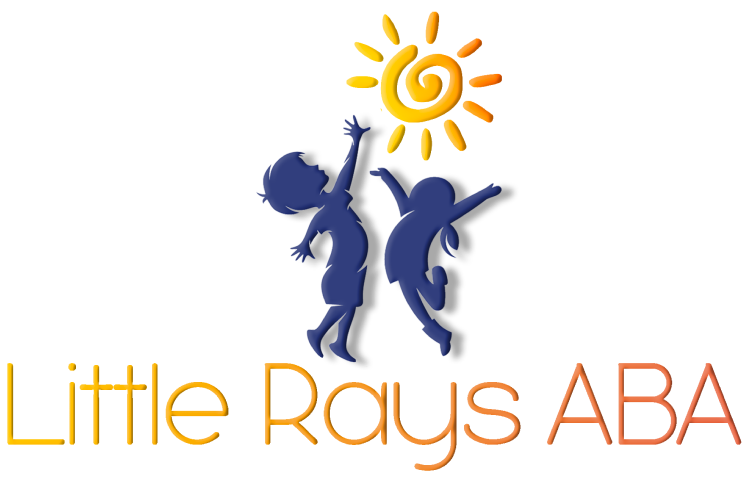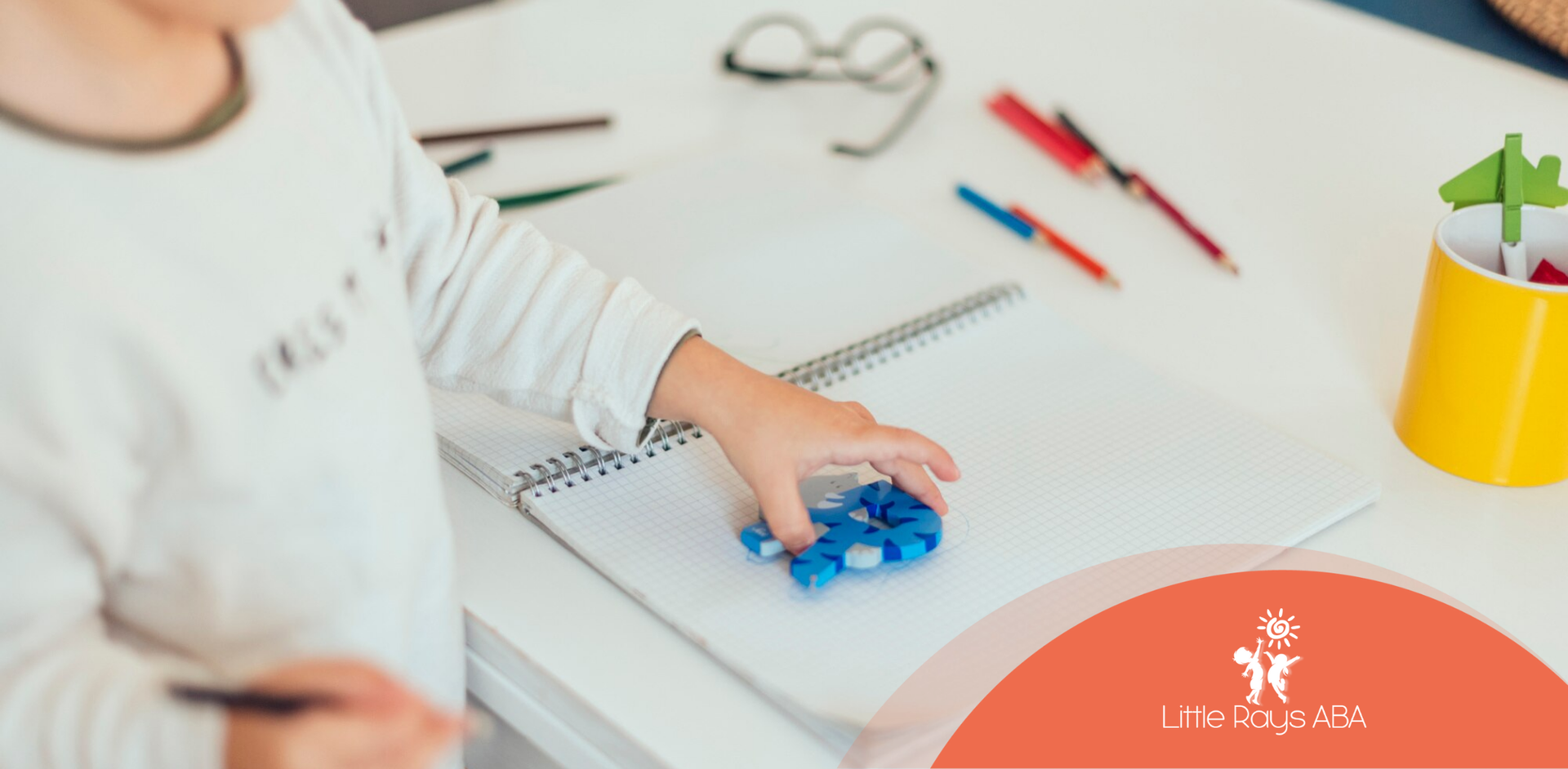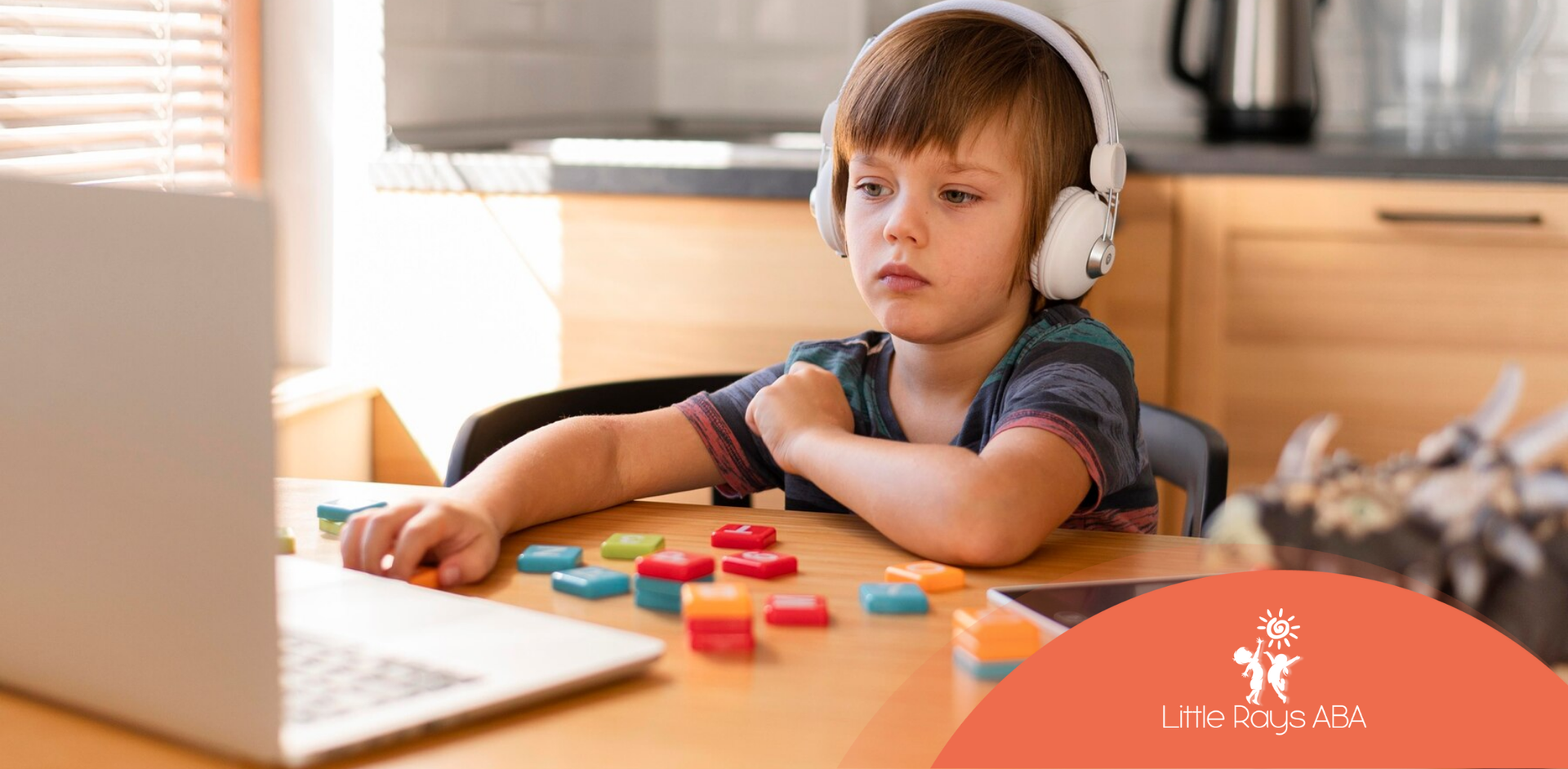Understanding Autism Learning Styles
Impact of Learning Styles
Autistic individuals often rely on a specific learning style, which can significantly influence their educational experience. Observing behaviors such as enjoying looking at books, watching television, and carefully observing people and objects may indicate a visual learning style in autistic children. Understanding and catering to these learning styles can enhance their ability to attend to and process information, thereby improving their performance in school and behavior.
Learning styles can affect how well a person performs in an educational setting. Schools typically require both auditory and visual learning. If an individual struggles with one of these methods, they may rely heavily on their strength. Autistic individuals may face challenges in school if they are poor at both visual and auditory learning.
Challenges in Educational Settings
Children with autism spectrum disorders (ASD) often experience significant emotional distress related to attending school, known as "school distress". This distress can be exacerbated by difficulties in sensory processing and attention. Research shows that students with ASD exhibit hyper- and/or hypo-reactivity to sensory input and atypical sensory interests. These sensory sensitivities can present significant challenges in the classroom, negatively influencing access to educational material necessary for learning.
Additionally, individuals with ASD exhibit early and pervasive impairments in attention, which may further complicate their learning experience. Educators should assess the learning style of an autistic student as soon as they enter the school system and adapt their teaching methods accordingly. This approach can help mitigate some of the challenges faced by autistic students and improve their overall educational experience.
For more information on specific strategies for different learning styles, visit our articles on visual learning strategies for autism, auditory learning techniques for autism, and kinesthetic learning activities for autism.
Visual Learning Style in Autism
Characteristics of Visual Learners
Visual learners with autism often exhibit a strong preference for processing information through visual means. They may enjoy looking at books, watching television, and carefully observing people and objects. These individuals tend to rely heavily on visual stimuli to understand and retain new information.
Key characteristics of visual learners include:
- Preference for reading and looking at charts or diagrams.
- Strong ability to remember visual details.
- Enjoyment in activities that involve visual observation.
- Need to see information to best retain it.
Visual learners may also exhibit superior lexical processing of individual words but struggle with grammar and context-dependent language use. This learning style can be particularly effective for autistic individuals who may use fewer learning styles than their non-autistic peers.
Strategies for Visual Learners
To support visual learners with autism, educators and caregivers can implement various strategies that cater to their strengths. These strategies can help enhance their learning experience and improve their ability to retain and understand information.
Effective strategies for visual learners include:
- Use of Visual Aids: Incorporate graphic organizers, charts, and diagrams to present information in a visual format. This helps autistic children better understand relationships between concepts and ideas.
- Visual Schedules: Create visual schedules to outline daily routines and activities. This can help reduce anxiety and provide a clear structure for the day.
- Picture Exchange Communication System (PECS): Utilize PECS to support communication. This system uses pictures to help autistic individuals express their needs and thoughts.
- Interactive Whiteboards: Use interactive whiteboards to display visual content during lessons. This can engage visual learners and make the learning process more dynamic.
- Technology-Assisted Learning: Implement technology-assisted learning tools that provide visual content, such as educational apps and software designed for visual learners.
- Visual Storytelling: Use visual storytelling techniques to explain concepts and ideas. This can include drawing pictures, using storyboards, or creating visual narratives.
- Color-Coding: Use color-coding to organize information and highlight important details. This can help visual learners quickly identify and remember key points.
By understanding and utilizing these strategies, educators and caregivers can create a supportive learning environment for visual learners with autism.
Auditory Learning Style in Autism
Characteristics of Auditory Learners
Auditory learners are individuals who learn best through listening. They prefer to hear information rather than read it or see it visually. This learning style is particularly beneficial in traditional classroom environments where lectures and verbal instructions are common. Auditory learners often excel when information is presented through spoken words, such as audiobooks, lectures, and discussions.
For autistic individuals, auditory learning can be both an advantage and a challenge. While they may have superior lexical processing of individual words, they often struggle with grammar and context-dependent language use. This means that while they can understand and remember words they hear, they may find it difficult to grasp the overall meaning or context of a conversation or lecture.
Strategies for Auditory Learners
To support auditory learners with autism, educators and caregivers can implement various strategies that cater to their strengths and address their challenges. Here are some effective strategies:
- Use of Audiobooks and Podcasts: Providing information through audiobooks and podcasts can help auditory learners absorb and retain information more effectively. This method allows them to listen at their own pace and replay sections as needed.
- Verbal Instructions: Giving clear and concise verbal instructions can help auditory learners understand tasks and assignments better. Breaking down complex instructions into smaller, manageable steps can also be beneficial.
- Interactive Discussions: Encouraging interactive discussions and verbal participation in the classroom can help auditory learners engage with the material. This can include group discussions, Q&A sessions, and oral presentations.
- Repetition and Reinforcement: Repeating key points and reinforcing important information through verbal reminders can aid in retention. This can be done through regular review sessions and summarizing key concepts at the end of lessons.
- Minimize Background Noise: Creating a quiet and distraction-free environment can help auditory learners focus better. Reducing background noise and using noise-canceling headphones can be effective in minimizing sensory overload.
- Use of Technology: Incorporating technology, such as voice recorders and speech-to-text software, can assist auditory learners in capturing and processing information.
| Strategy | Description |
|---|---|
| Audiobooks and Podcasts | Provide information through audio formats for better absorption. |
| Verbal Instructions | Give clear and concise verbal instructions, breaking down complex tasks. |
| Interactive Discussions | Encourage participation in discussions and oral presentations. |
| Repetition and Reinforcement | Repeat key points and reinforce information through verbal reminders. |
| Minimize Background Noise | Create a quiet environment and use noise-canceling headphones. |
| Use of Technology | Utilize voice recorders and speech-to-text software. |
By implementing these strategies, educators and caregivers can create a supportive learning environment for auditory learners with autism.
Kinesthetic Learning Style in Autism
Characteristics of Kinesthetic Learners
Kinesthetic learners are individuals who learn best through movement and tactile (touch) input. They are often referred to as hands-on learners, as they grasp concepts more effectively by doing rather than by seeing or hearing about them. This learning style is particularly significant in the context of autism, where traditional learning methods may not always be effective.
Key characteristics of kinesthetic learners include:
- Preference for physical activities and hands-on tasks
- Tendency to fidget or move around while learning
- Strong coordination and motor memory
- Difficulty sitting still for long periods
- Enhanced learning through activities that involve touch and movement
Understanding these traits can help educators and caregivers create more effective learning environments for kinesthetic learners with autism.
Strategies for Kinesthetic Learners
Implementing strategies that cater to the kinesthetic learning style can significantly enhance the educational experience for individuals with autism. Here are some effective strategies:
- Outdoor Activities: Incorporating outdoor activities can provide kinesthetic learners with the movement they need while learning. Activities such as nature walks, scavenger hunts, and physical education can be both educational and engaging.
- Hands-On Experiments: Science experiments, art projects, and building models are excellent ways to engage kinesthetic learners. These activities allow them to learn by doing and can make abstract concepts more concrete.
- Creating Physical Models: Using physical models to represent concepts can help kinesthetic learners understand and retain information. For example, using clay to model the solar system or building a volcano to demonstrate geological processes.
- Movement Activities or Breaks: Allowing for movement breaks or incorporating movement into lessons can help kinesthetic learners stay focused. Simple activities like stretching, jumping jacks, or even a quick dance can re-energize students and improve concentration.
- Providing Sensory Devices: Sensory devices such as stress balls, fidget spinners, or textured materials can help kinesthetic learners stay engaged. These tools provide the tactile input they need and can be used discreetly during lessons.
| Strategy | Description |
|---|---|
| Outdoor Activities | Learning through nature walks, scavenger hunts, and physical education |
| Hands-On Experiments | Engaging in science experiments, art projects, and building models |
| Creating Physical Models | Using clay, building blocks, or other materials to represent concepts |
| Movement Activities or Breaks | Incorporating stretching, jumping jacks, or quick dances into lessons |
| Providing Sensory Devices | Incorporating stretching, jumping jacks, or quick dances into lessons |
By understanding and implementing these strategies, educators and caregivers can create a more inclusive and effective learning environment for kinesthetic learners with autism.
Read/Write Learning Style in Autism
Characteristics of Read/Write Learners
Read/write learners with autism excel when they engage with written material. They prefer to learn through reading and writing, often finding comfort and clarity in text-based information. These learners typically enjoy reading textbooks, handouts, and other written resources. They also benefit from taking notes, which they can review and re-read to reinforce their understanding.
Autistic individuals with a read/write learning style may have superior lexical processing of individual words but might struggle with grammar and context-dependent language use. This is because the read/write learning style is less effective at extracting grammatical rules and understanding context.
Strategies for Read/Write Learners
To support read/write learners with autism, educators and caregivers can implement various strategies that cater to their strengths and preferences. Here are some effective approaches:
- Encourage Note-Taking: Allow students to take notes during lessons. This helps them process and retain information better.
- Provide Written Materials: Offer textbooks, handouts, and other written resources that students can read and refer to.
- Use a Discussion Board: Create an online discussion board where students can write and share their thoughts, questions, and insights.
- Offer Writing Opportunities: Incorporate writing assignments and activities into the curriculum to give students ample practice.
- Highlight Key Information: Use highlighters or underline important points in written materials to draw attention to critical information.
- Create Study Guides: Develop study guides that summarize key concepts and provide a structured way for students to review material.
| Strategy | Description |
|---|---|
| Note-Taking | Encourages processing and retention of information. |
| Written Materials | Provides resources for reading and reference. |
| Discussion Board | Facilitates written communication and sharing of ideas. |
| Writing Opportunities | Offers practice through assignments and activities. |
| Highlighting | Draws attention to important information. |
| Study Guides | Summarizes key concepts for structured review. |
Implementing these strategies can help read/write learners with autism thrive in educational settings.
Sensory Sensitivities in Autism
Sensory sensitivities are a common characteristic among individuals with autism. These sensitivities can manifest as either oversensitivity or undersensitivity to various sensory inputs, impacting their learning and daily experiences.
Oversensitivity and Undersensitivity
Autistic individuals may experience heightened or diminished responses to sensory stimuli. Understanding these responses is crucial for creating supportive learning environments.
Oversensitivity
Oversensitivity, also known as hyper-sensitivity, occurs when an individual has an exaggerated response to sensory stimuli. Autistic children with oversensitivities might express distress by crying, wanting to get away from sensory input, withdrawing, shutting down, putting hands over ears or eyes, stimming more, or appearing restless, stressed, or irritable. Common signs include:
- Discomfort in bright rooms
- Avoidance of certain textures or sensations
- Specific preferences in clothing
Undersensitivity
Undersensitivity, or hypo-sensitivity, occurs when an individual has a reduced response to sensory stimuli. Autistic children with undersensitivities might seek out sensory experiences, such as touching, hearing, or tasting things. Common signs include:
- Seeking different textures
- Enjoying tight hugs
- Not noticing strong odors
Some autistic children might seem less aware of pain, not reacting to painful experiences like breaking an arm in a fall. It's suggested to help children who seem less aware of pain by understanding their unique expressions of pain and providing appropriate support.
Managing Sensory Sensitivities
Managing sensory sensitivities involves creating an environment that accommodates the unique sensory needs of autistic individuals. Here are some strategies:
Professional Support
Occupational therapists can assess an autistic child's sensory needs and develop a plan for managing them. Dietitians and speech pathologists can help with taste, smell, and sound sensitivities causing eating issues. Vision and hearing checks are recommended to rule out any problems contributing to sensory sensitivities. Seeking professional advice is advised if a child's behavior is harmful.
Classroom Strategies
- Visual Supports: Use visual schedules and cues to help children understand and anticipate sensory experiences. For more strategies, visit visual learning strategies for autism.
- Auditory Adjustments: Provide noise-canceling headphones or create quiet spaces to reduce auditory overload. Explore more techniques at auditory learning techniques for autism.
- Kinesthetic Activities: Incorporate movement breaks and tactile activities to help children with undersensitivities. Learn more at kinesthetic learning activities for autism.
Home Strategies
- Sensory-Friendly Spaces: Create a sensory-friendly space at home with dim lighting, soft textures, and minimal noise.
- Routine and Predictability: Establish consistent routines to help children feel secure and reduce sensory-related anxiety.
- Sensory Tools: Use sensory tools such as fidget toys, weighted blankets, and chewable jewelry to provide comfort and sensory input.
By understanding and addressing sensory sensitivities, caregivers and educators can create supportive environments that enhance the learning and well-being of autistic individuals.
Final Thoughts
Creating a supportive learning environment for autistic individuals starts with understanding their unique learning styles. By tailoring educational strategies to their strengths—whether visual, auditory, kinesthetic, or read/write—educators and caregivers can foster more effective learning experiences.
If you’re looking for expert guidance in personalized ABA therapy to support your child’s educational journey, contact Little Rays ABA today! Let’s work together to unlock your child’s full potential.
Sources:
- https://autism.org/learning-styles-autism/
- https://www.forbrain.com/autism-learning/autism-learning-styles/
- https://pmc.ncbi.nlm.nih.gov/articles/PMC3155869/
- https://raisingchildren.net.au/autism/behaviour/understanding-behaviour/sensory-sensitivities-asd
- https://nationalautismresources.com/the-picture-exchange-communication-system-pecs/
Unlock Your Child's Potential with Expert ABA Therapy!
At Little Rays ABA, we provide compassionate, evidence-based ABA therapy to help children with autism thrive. Our personalized approach fosters growth in communication, social skills, and independence.
Get In Touch With Us Today to Get Started With ABA Therapy!
Related Posts
MENU
GET IN TOUCH
7117 San Salvador Dr Boca Raton, FL 33433
3200 Collins Ave Miami Beach, FL 33140





